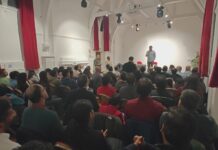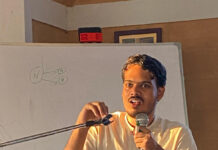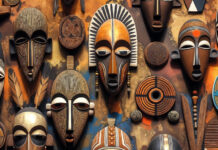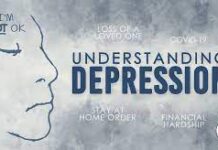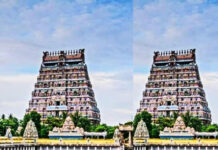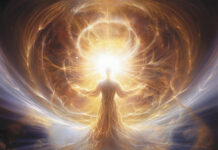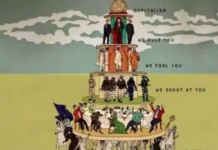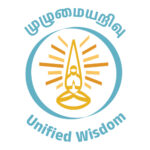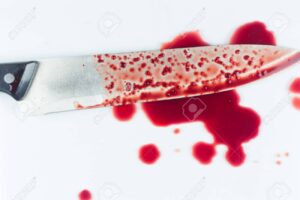
In the old days, doctors never disclosed the illness or treatment plan to their patients. Patients simply had to trust their doctor’s judgment without question. If the patient recovered, it was viewed as a gift from the doctor, and gratitude was expected. It was common to see patients express reverence by bowing to doctors after getting better. During that time, doctors were held in high regard, almost like gods. This perception was shared by the doctors themselves. If a patient didn’t improve, they would be referred to a more experienced physician seen as a higher deity. If the patient passed away, it was considered the ultimate decision of a higher power, beyond human intervention.
Many mysterious tales and legends about the renowned doctors of Nagercoil abounded during my childhood. Dr Somerwell, a key figure at Scottish Mission Hospital Neyyoor, is said to have miraculously mended a worker’s hand bone post-accident by using a bicycle handlebar. Various myths have been recounted in literature, such as the poetic work “Flute and Knife” by renowned Malayalam poet Vailoppill Sridhara Menon, which pays homage to Dr. Somerwell. The poem portrays Dr. Somerwell soothing a patient in the pain of post surgery with his flute playing. The juxtaposition of the melodic flute and the surgical knife is fitting for a deity. Within my renowned collection “Stories of the True,” I feature a brief narrative on Dr. Somerwell.
However, the veneration of doctors as gods has declined. Today, people view them as highly compensated, skilled technicians. We assess doctors based on their professional and educational background. In reality, our trust in physicians has diminished. I believe that American philosopher Ivan Illich sparked this shift with his seminal book ‘Medical Nemesis’. Illich suggests that our trust in physicians stems from ancient beliefs in sorcerer-curers; thus, they have an ultimate power over common people. Today, doctors are simply professionals who are accountable for their actions both legally and ethically.
In reality, with the absence of the burden of sanctity, modern doctors highly value their new position. They lack emotional connection with us, making their work technically efficient and less complex. The new system is user-friendly, connecting us to a system and knowledge rather than a single person. Its objective, logical structure instills more trust in us. Historically, our society lacked education and exposure to current science, relying on belief as the norm. However, today, being educated and engaged in diverse scientific domains, a rational approach is fitting for modern times.
We cannot rely on doctors right now, regardless of who they are. We are seeking information about our condition and treatment plan from the physician. The physician strives to provide us with comprehensive details about the illness, its treatment, and sometimes its irreversibility. In older movies, we observe doctors withholding information about patients’ illnesses, with the truth often coming out in a dramatic moment. Nevertheless, current regulations require physicians to truthfully disclose a patient’s diagnosis.
We have two approaches to life: to understand and navigate. The first is the path of objective knowledge, or the atheist route. The other is the theist path, or belief path. Until we come across an unexplainable event that defies rationality, we stay committed to the first path. Everything beyond our knowledge leads us towards theism, including losses, grief, anxiety, and the infinity perceived through the unpredictability of everyday existence.
I can explain why there is an increase in religious speeches and sermons about yoga in India. Modern education has led more people to become atheists, but many eventually seek a transition to spiritualism and require convincing methods. Two common paths facilitate this transition. The first is the traditional route of devotion (bhakti), utilising beliefs, emotion, and aesthetics as essential tools, holding substantial influence as the main path to theism. The second path involves popular meditation (Yoga), which can be comprehended through fundamental philosophical reasoning, making it accessible to those who cannot entirely dismiss scientific logic.
The widely accepted ‘popular yoga’ method, originating in the 1980s and prevalent in India, represents a fusion and adaptation of various tantra and yoga practices. It is rooted in fundamental self-improvement theories from the Kopmeyer era in the USA, alongside simple empirical science. Catering to individuals who consider themselves intellectuals and struggle with traditional deity worship, these spiritual organisations offer a rational framework to support their scientific understanding. Such establishments often lead to the veneration of personalities and the formation of cults.
K.A. Jayaseelan, a renowned poet from Kerala, is known for a particular poem. A line of small insects is moving towards the lizard’s mouth, perched in a corner of the wall. The first one gets stuck and looks sideways, trying to escape upon noticing the lizard. However, it is a corner of the wall. Being pushed in the lizard’s direction, it cannot turn back. The poem ends with the poet’s reflection: “No one realises there’s an alternative; they could simply drop from the wall and flee.”
There is an alternate route, the path of Advaita Vedanta, famous for its logic and demonstrated effectiveness. Advaita illuminates our ignorance, our remarkable attachment to our own ignorance, and the consequent suffering. This deep ignorance stretches from our everyday life to the spiritual realm, which is as vast as the universe. Advaita stresses that acknowledging this ignorance is essential understanding, a vital first step towards ultimate liberation (Mukti).
I always view an Advaita guru as one steadfast in revealing the truth to the suffering individual; they are resolute because the truth itself is unwavering. Advaita provides no solace or comfort for our pains. It presents pain as it is. This is why the Upanishad describes the path of Vedanta as the sharp edge of a knife.
(In the past, scholars misunderstood the term ‘Kshuarasyadhara‘ as walking on the edge of a razor’s blade. It signifies the edge of a barber’s knife. But historically, barbers performed surgeries in India. Even in my village in the 1980s, I saw barbers carrying out minor surgeries. That knife is essentially a surgeon’s blade. It is unyielding because it must be precise.)
Advaita presents the broader picture, vast as the cosmos, diminishing everything to insignificance. It reveals a glimpse of the infinite ‘that‘ and upholds knowledge as the sole means to transcend our sorrows. For a wise individual, acknowledging suffering as inevitable and inherent in the natural order is a source of solace, as the true anguish stems from the unknowable.
Advaita resembles a contemporary physician, diagnosing our maladies and providing remedies. It is unsparing, disclosing what is beyond remedy as well. Devoid of empathy, precision defines its essence. Undoubtedly, it is not suited for all. Those who seek solace and compliance must seek traditional healers. The new healer caters to the modern individual who trusts in their own intellect. He rejects falsehoods of compassion and comfort, valuing only the precision of the surgeon’s blade.
Jeyamohan
